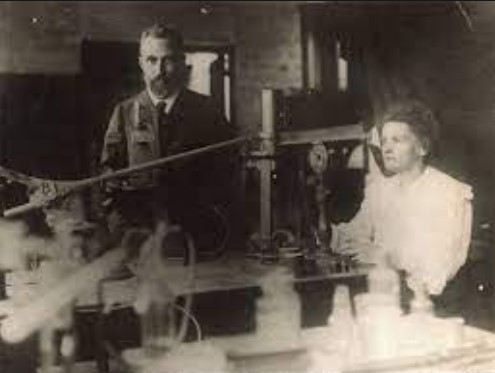Polonium and Plutonium, two elements that sit quietly on the periodic table, hold significant sway in the realms of science, technology, and even geopolitics. Their discovery, properties, and applications have fascinated scientists and laypersons alike, contributing to advancements in various fields as well as sparking debates over their environmental and health impacts. While they may share a portion of their names and a place in the actinide series, their differences are profound and consequential.
Polonium and Plutonium are distinct not only in their atomic structure but also in their uses, safety precautions, and environmental impacts. Polonium, with its radioactive properties, has found applications in industrial devices and scientific research, whereas Plutonium, known for its role in nuclear reactors and weapons, carries a significant weight in energy production and defense strategies. These differences underline the unique paths these elements carve in human endeavors and their lasting impact on society and the environment.
Delving into the atomic details reveals that Polonium and Plutonium differ in their atomic number, mass, and electron configuration, leading to varied characteristics and applications. The handling, storage, and safety protocols for each element are tailored to their specific properties and risks. Furthermore, their environmental footprints and the efforts required for contamination cleanup underscore the complexity of their existence in our world.

Elemental Basics
Polonium Overview
Discovery and History
Polonium, symbol Po, is a rare and highly radioactive element. It was discovered in 1898 by Marie and Pierre Curie while investigating the causes of uranium’s radioactivity. Named after Poland, Marie Curie’s homeland, Polonium’s discovery was pivotal, highlighting the existence of elements solely identified by their radioactive properties.
Physical Characteristics
Polonium is silvery-gray in appearance and exists in various allotropic forms. Its most stable isotope, Po-209, has a half-life of 103 years, but the most common isotope, Po-210, is much more radioactive and has a half-life of about 138 days. Polonium’s remarkable feature is its ability to emit alpha particles, which is central to its applications and safety considerations.
Plutonium Overview
Discovery and History
Plutonium, with the symbol Pu, was first produced and identified in 1940 by a team led by Glenn T. Seaborg and Edwin M. McMillan at the University of California, Berkeley. The element was named after Pluto, following the tradition of naming elements after planets. Initially developed for the Manhattan Project, Plutonium played a crucial role in the development of nuclear weapons.
Physical Characteristics
Plutonium is a metallic element that exhibits six allotropes or structural forms, each with distinct physical properties. It is dense, silvery, and highly reactive, especially when exposed to air, forming a dull coating when oxidized. The most significant isotope, Pu-239, is well-known for its capability to sustain a nuclear chain reaction, making it essential for nuclear reactors and weapons.
Atomic Structure
Polonium Atomic Details
- Atomic number: 84
- Atomic mass: varies by isotope; Po-210 has a mass of 209.9828737 u
- Electron configuration: [Xe] 4f14 5d10 6s2 6p4
The atomic structure of Polonium is characterized by its 84 protons and a variable number of neutrons, which determine its isotopes. The electron configuration reveals its place in the p-block of the periodic table, hinting at its chemical reactivity and bonding capabilities.
Plutonium Atomic Details
- Atomic number: 94
- Atomic mass: varies by isotope; Pu-239 has a mass of 239.0521634 u
- Electron configuration: [Rn] 5f6 7s2
Plutonium’s atomic structure consists of 94 protons and a variable number of neutrons. Its electron configuration places it in the f-block, indicating its participation in complex bonding scenarios and its role in advanced nuclear physics phenomena.
Applications
Polonium Uses
Industrial Applications
- Antistatic devices: Polonium is used in devices to eliminate static electricity in processes such as paper rolling, wire production, and the manufacturing of synthetic fibers.
- Neutron sources: When combined with beryllium, Polonium can be a source of neutrons for research and industrial applications.
Scientific Research
- Radioisotope thermoelectric generators (RTGs): In space missions, Polonium-210 has been used as a heat source to generate electricity in RTGs.
Plutonium Uses
Energy Production
- Nuclear reactors: Plutonium-239 is a key fuel in nuclear reactors, especially in mixed oxide (MOX) fuel, where it is blended with uranium to generate energy.
Defense and Space Exploration
- Nuclear weapons: Plutonium-239 is critical for the core of nuclear weapons due to its capacity to undergo a rapid, explosive fission reaction.
- Space missions: Plutonium-238 is used in RTGs for long-duration space missions, providing a reliable energy source far from the Sun.
Health and Safety
Polonium Risks
Exposure Effects
- Polonium is extremely toxic if ingested or inhaled, with its alpha radiation causing severe damage to biological tissues.
Safety Precautions
- Handling requires strict safety protocols, including protective clothing and specialized ventilation systems to prevent inhalation or ingestion.
Plutonium Risks
Exposure Effects
- Exposure to Plutonium can cause acute radiation sickness and increase the risk of cancer. It poses a risk through inhalation, ingestion, or absorption through wounds.
Safety Precautions
- Shielding: Dense materials are needed to shield against the radiation.
- Gloves and protective clothing: To prevent skin contact.
- Ventilation: To avoid inhalation of radioactive particles.

Environmental Impact
Polonium in the Environment
Natural Occurrence
Polonium occurs naturally in the environment, mainly as a result of the decay of uranium and thorium present in the earth’s crust. This decay process leads to trace amounts of Polonium in the soil, air, and water. Despite its scarcity, its presence is ubiquitous due to these natural processes.
Contamination and Cleanup
The environmental impact of Polonium is significant primarily around areas of industrial discharge and inadequate nuclear waste disposal. Cleanup efforts are challenging due to its high radioactivity and involve:
- Soil remediation: Removing contaminated soil or immobilizing the Polonium to prevent further spread.
- Water treatment: Employing specialized filters to capture radioactive particles in water bodies.
Plutonium in the Environment
Sources of Pollution
Plutonium pollution stems from nuclear weapon tests, accidents at nuclear power plants, and improper disposal of nuclear waste. These activities have introduced Plutonium into the environment, posing long-term ecological and health risks.
Contamination and Cleanup Efforts
Contaminated sites require extensive cleanup operations, including:
- Excavation and containment: Removing contaminated soil and securing it in specialized facilities.
- Water remediation: Implementing advanced filtration techniques to remove Plutonium from water sources.
Isotopes and Radioactivity
Polonium Isotopes
Stable and Radioactive Isotopes
All isotopes of Polonium are radioactive, with Po-209 being the most stable, having a half-life that allows it to exist longer than others but still requires careful handling due to its decay into lead.
Half-life and Decay
Polonium isotopes, notably Po-210, have relatively short half-lives, leading to a rapid release of alpha particles. This decay process is a double-edged sword, useful in certain applications but hazardous if not properly controlled.
Plutonium Isotopes
Stable and Radioactive Isotopes
Similar to Polonium, Plutonium does not have stable isotopes. Pu-239 and Pu-240 are among the most significant due to their use in nuclear reactors and weapons.
Half-life and Decay
The half-life of Plutonium isotopes varies widely. Pu-239, for example, has a half-life of about 24,100 years, indicating its long-term persistence in the environment and the enduring challenge of managing its radioactive decay.
Handling and Storage
Polonium Handling
Storage Requirements
Storing Polonium necessitates:
- Shielding: To protect from its alpha radiation.
- Airtight containers: To prevent the escape of radioactive particles.
Handling Techniques
Safe handling of Polonium involves:
- Protective gear: Including gloves and face masks.
- Controlled environments: To minimize exposure to its radiation.
Plutonium Handling
Storage Requirements
Plutonium storage also requires robust shielding but must additionally address its potential for spontaneous fission:
- Criticality-safe containers: To prevent unintended chain reactions.
Handling Techniques
- Remote handling tools: Given its radioactivity and potential for criticality, mechanical arms or remote-controlled devices are used.
- Rigorous safety protocols: Including regular health monitoring and decontamination processes for personnel.
Cost and Availability
Polonium Availability
Sources and Rarity
Natural Polonium is extremely rare, with most of it being artificially produced in nuclear reactors through neutron bombardment of Bismuth.
Market Influence on Price
The scarcity and complex production process of Polonium significantly influence its market price, making it one of the more expensive elements, used sparingly and carefully in industrial and research settings.
Plutonium Availability
Sources and Rarity
While also rare in nature, Plutonium is primarily produced in nuclear reactors through the neutron bombardment of Uranium-238.
Market Influence on Price
The cost of Plutonium is driven by its strategic importance, production complexity, and the stringent security measures required for its handling and transport, reflecting its high value in energy and defense sectors.
Future Prospects
Polonium Innovations
Potential Future Applications
Researchers are exploring new uses for Polonium, particularly in areas where its intense radioactivity can be harnessed beneficially, such as in targeted cancer treatments or next-generation nuclear batteries.
Research Directions
The focus is on enhancing the safety and efficiency of Polonium-based technologies, reducing its environmental impact, and finding sustainable methods for its production and disposal.
Plutonium Innovations
Potential Future Applications
The future of Plutonium is closely linked to advancements in nuclear energy and space exploration. Innovations aim at safer, more efficient nuclear reactors and more reliable power sources for deep-space missions.
Research Directions
Significant research is directed towards minimizing Plutonium’s environmental footprint, improving reprocessing and recycling methods, and enhancing the safety of nuclear fuels.
Frequently Asked Questions
What are the primary uses of Polonium?
Polonium’s most notable applications lie in its use as a source of neutrons when bombarded with alpha particles and in devices that eliminate static charges in machinery and dust removal in clean-room environments. Despite its limited availability, its potent radioactive nature makes it invaluable in specific industrial and scientific settings.
How is Plutonium used in nuclear reactors?
Plutonium plays a critical role in nuclear reactors as a fuel, particularly in the form of mixed oxide (MOX) fuel. This involves blending Plutonium with natural or depleted Uranium to create a fuel that sustains nuclear fission, thereby producing energy. Its capacity to undergo fission makes it a pivotal element in the generation of nuclear power.
What are the health risks associated with Polonium and Plutonium exposure?
Exposure to Polonium and Plutonium poses significant health risks, including acute radiation syndrome and increased cancer risk, due to their high radioactivity. While Polonium primarily emits alpha particles that are hazardous if ingested or inhaled, Plutonium exposure risks stem from inhalation, ingestion, or absorption through the skin, leading to similar health concerns.
How are Polonium and Plutonium handled and stored safely?
Safe handling and storage of Polonium and Plutonium require stringent protocols to mitigate their radioactive hazards. This includes the use of containment systems to prevent airborne contamination, shielding to protect from radiation exposure, and strict environmental controls to avoid accidental release. Personnel must also employ protective gear and adhere to safety procedures to minimize health risks.
Conclusion
The exploration of Polonium and Plutonium uncovers a landscape marked by intriguing contrasts and parallels. These elements not only embody the dualities of scientific advancement—offering both promise and peril—but also serve as a testament to the complexities inherent in managing and harnessing the power of the atom. As we navigate their applications and implications, the stewardship of such formidable elements highlights the ongoing challenges and responsibilities faced by the scientific community and society at large.
In reflecting on the significance of understanding Polonium and Plutonium, it becomes evident that their impact extends beyond the confines of laboratories and military arsenals. They compel us to confront broader questions about environmental stewardship, health safety, and the ethical dimensions of technological progress. Ultimately, the journey through the atomic realms of Polonium and Plutonium is not just about grappling with the elements themselves but about charting a course towards responsible and informed engagement with the material world.

